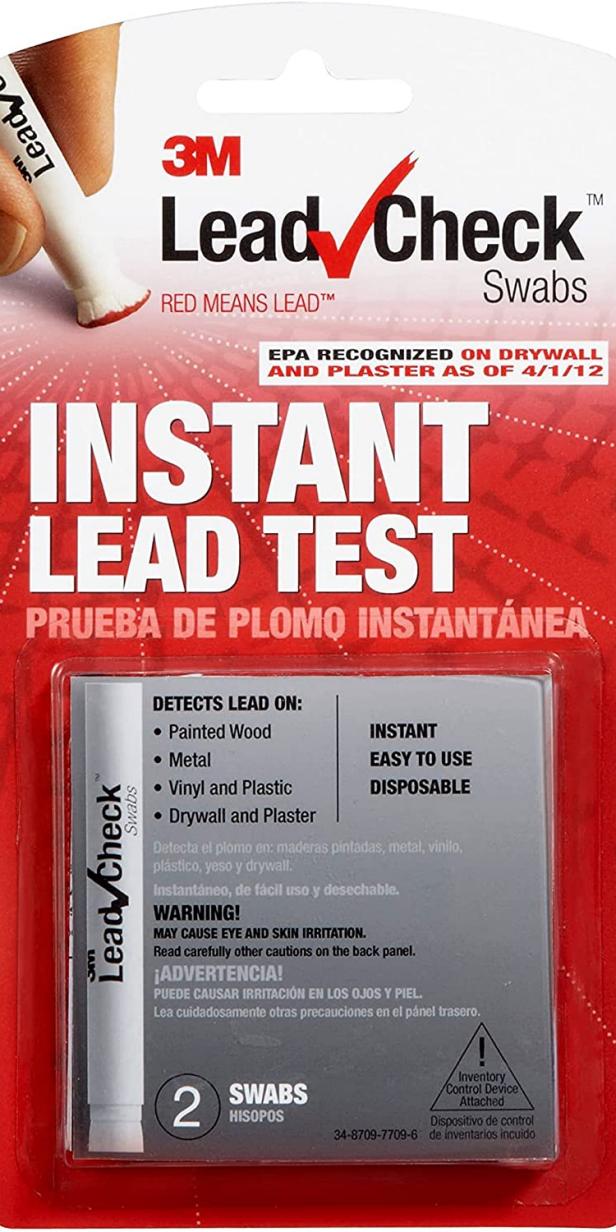Should You Be Concerned About Lead in Antiques
Lead house paint and plumbing components may already be on your radar, but this toxic substance could also be hanging out in your cabinets and credenza.

Tens of millions of Americans are exposed to lead in their homes, according to the Centers for Disease Control and Prevention (CDC). Though plumbing and house paint hog the headlines, the furnishings in our living spaces can also introduce new sources of lead to our lives. Many secondhand and antique goods are from a time before lead was limited in our products. Unsafe levels can be present in handmade pottery and products from countries where lead isn’t well-regulated. And we unwittingly create potential lead hazards when we refinish antique furniture or create new decor from reclaimed and salvaged materials.
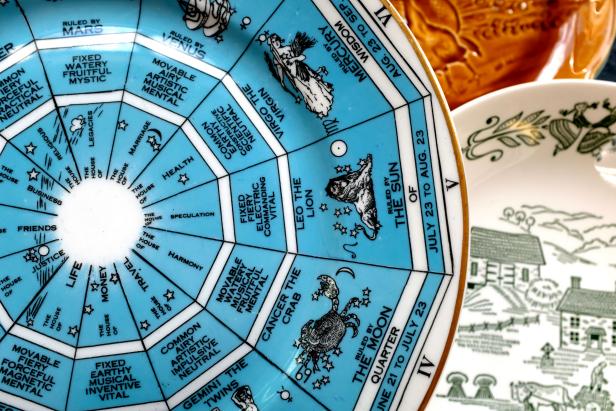
Carrie Hamblin
FDA recommends refraining from using antique and vintage dishware, glasses or cookware unless you know they're safe.
What is Lead and Why is It in My Stuff?
Lead is a soft metal found naturally in air, soil, food and water, but now it exists in large amounts in our environment mostly because of human activity. For thousands of years, humans have incorporated lead into a ton of things, including gasoline, building materials and consumer goods. Lead in paint and glazes enhances colors and improves strength. In plastics and metals, it can add flexibility or corrosion resistance. Unfortunately, lead has not been a faithful companion to humans or animals, and lead poisoning is a real problem. Children under age 6 are at the greatest risk of exposure, but adults are in no way immune (CDC).
Common Places to Find Lead in Housewares
Lead is found at high levels in a variety of antiques and vintage items for the home, including:
- dishware and cookware
- leaded crystal and glassware
- brass and pewter
- painted furniture and decorative items.
As you likely already know, lead has been used extensively in metal plumbing components and paint in homes and buildings. So, salvaged building materials — reclaimed wood planks and beams, architectural accents, painted tin panels, faucets and other items — commonly have unsafe levels of lead.
Surprisingly, lead can be found in new housewares too, but hopefully less of it. The US began regulating lead in a consequential way in the 1970s. Emerging science has redefined what is considered safe multiple times since then, so the allowable limit in many new products and materials has been decreasing over the decades (CDC). Recalls of manufactured domestic and imported products due to unsafe amounts of lead happen regularly. And items from small producers purchased at flea markets and artisan fairs have prompted public warnings and investigations by health departments across the country.
Interestingly, the US Consumer Product Safety Commission (CPSC) laws and regulations on lead apply to anyone who sells consumer products, from the largest national retailer to the smallest secondhand seller. This means that thrift shops, antique stores, boutiques, markets, pop-ups and individuals in online marketplaces and at garage sales can’t knowingly sell an item with lead over the established limits. But retailers are not required to test products for safety either (CPSC).
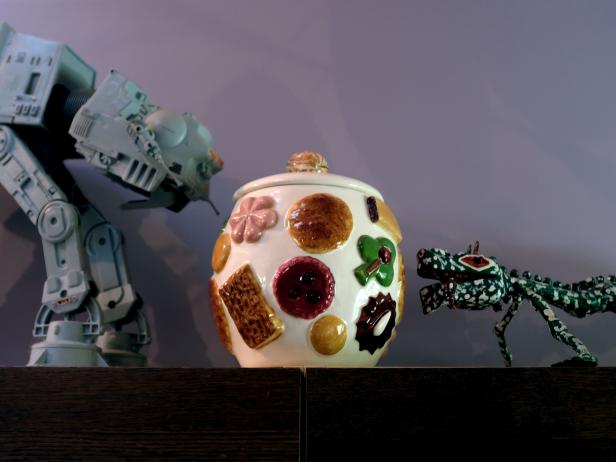
Carrie Hamblin
Vintage toys, painted decorative goods and ceramicware are a few of the household items that can contain high amounts of lead.
How to Test Housewares for Lead
For many vintage goods, the general thinking is that lead is so prevalent, we should presume it’s present and act accordingly — a topic we’ll address in a minute. But if you want confirmation on any suspicious item, you have a few options.
Hardware and box stores sell lead-testing kits in which you swab the surface of an item, and the swab changes color to indicate lead, but will not tell you the amount of lead present. What items are these kits appropriate for and how much should you rely on the results? That depends on whom you ask.
But Consumer Product Safety Commission staff performed tests using common consumer kits on various products and found them unreliable, so does not recommend them for anything (CPSC).
Professional testing options include submitting your item to an EPA-certified lab for testing or, for a thorough evaluation, inviting a certified inspector or risk assessor to your home.
Kids are at the greatest risk of lead poisoning and are more impacted by it. If anyone in your household — particularly a young or pregnant family member — might have been exposed to lead, Mayo Clinic recommends contacting a physician or health department to see if a blood test is warranted. The Mayo Clinic website provides more information about the signs and symptoms of lead poisoning.

Carrie Hamblin
Older painted items — furniture and collectibles — commonly have high amounts of lead in the finishes that become a potential hazard as they chip and flake. Lead was banned in paints for consumer use in 1978 with exemptions for artists' paints and those used by particular industries.
Okay, I Have (or May Have) Lead in My Housewares. Now What?
Wait to chuck all your treasures in the trashcan. Ingestion (swallowing) and inhalation are the two primary ways we’re exposed to lead, according to CDC. Since lead has to make it inside you to be problematic, what’s important is how up close and personal you’re getting with it.
Lead in kitchenware is of concern because it can leach into food and beverages that we then consume, according to FDA. Any dish that makes contact with something we ingest is a problem, but increased amounts can leach when the dish is heated and over longer periods of contact, making cookware and storage containers high on the worry list. Acidic foods and beverages increase lead absorption as well (FDA).
Damaged or deteriorated lead-based paint is the risk in older painted household items, explains Judy Echavez, a spokesperson for the US Consumer Product Safety Commission. “Individuals — adults or children — could be exposed to lead if the paint is damaged or has deteriorated and people breathe lead-containing particles or inadvertently transfer lead-containing dust to their mouths or food,” she says. She adds that adults could also be exposed to lead when they work with older painted items: during refinishing projects or by modifying the product in a way that disturbs the lead-containing paint.
Ms. Echavez reminds us that there are many possible sources of lead in residences in addition to those we mentioned, including lead-based household paint, drinking water and hobby materials (such as those for stained glass), to name a few. “Exposure will depend on the specifics of each home and each person’s experience and behaviors,” she says. EPA has a helpful list of sources of lead in and around the home.
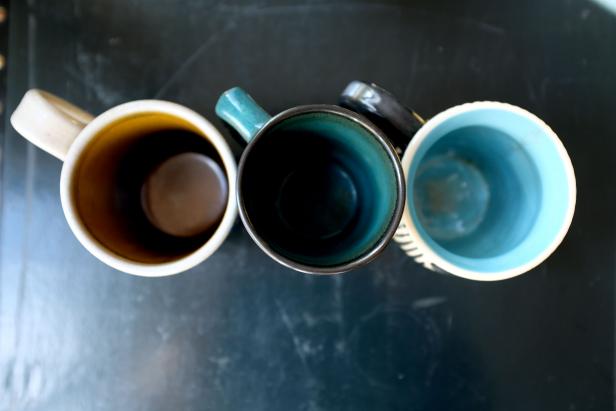
Carrie Hamblin
Artisan pottery from here and abroad may have lead in the glaze, no matter the age. Acidic drinks like coffee can cause more lead to leach into the beverage. FDA says to confirm the safety of handmade pieces by knowing the maker or testing the items.
Tips to Reduce the Risk of Lead Exposure From Housewares
Here are a dozen ways you can reduce the risk of lead exposure from high-risk homewares and decorating activities:
- Repurpose vintage kitchenware. FDA includes antique ceramics in its problem types of ceramicware that may contain unsafe amounts of lead. Don't use these items for eating, drinking, food preparation or storage unless you know they’re safe. That’s okay: a few wall hangers later and your grandparents’ china is a 3D gallery wall.
- Stay cool with your cookware. Brightly decorated warm-colored dishes also make the FDA’s list because lead is commonly used in red, orange and yellow pigments to make them more vivid. This ceramicware should be at the top of your testing list.
- Ditch the damaged dishes, no matter the era. Lead is allowed in ceramics because if pottery is properly fired and the surface intact, the lead is contained within the glaze, but when the item is compromised, that is no longer the case. So, it’s wise to avoid using damaged dishware of all vintages, including those that are chipped or cracked, have scratches in the decoration or crazing (crackling) in the glaze.
- With handmade pottery, meet the artist. In pottery kilns, lead never leaves. So, even new artisan pottery glazed in lead-free materials can end up contaminated when it’s fired in an older kiln that used to fire leaded-based glazes. For this reason, FDA recommends making sure you know the source of handmade ceramics or reserve your purchases to items that don’t make contact with food or drink. That artisan mug you were gifted will make a cute succulent planter, just don’t use it for kitchen herbs or anything edible.
- We can’t decant in leaded crystal. The California Department of Public Health says the occasional drink out of crystal stemware and glasses should be fine for adults but do not store liquids in leaded crystal. Remember, longer contact often means greater opportunity for absorption (CDPH).
- For vintage toys, display instead of play. Vintage toys commonly contain unsafe levels of lead in the painted surface, but it can be present in the substrate metal or plastic too, according to the CDC. As these materials age, the lead that was once bound up can leach out (CDC). The universal consensus is to keep children away from lead, so display your childhood train set, dolls and action figures on an out-of-reach shelf instead of tossing them in the toy box for younger ones to enjoy.
- Read the (import) label. Lead has not been universally regulated across the world, so foreign-made products may easily exceed safe amounts, says the CDC. Sometimes lead hasn’t been banned in the country of origin; in other cases, regulation is in place but oversight is inadequate. Bear this in mind when purchasing old and new imported goods, particularly from small producers and online purchases.
- Hard pass on the hand-me-down crib from your in-laws. As we’ve learned, high amounts of lead are common in older furniture finishes, so keep these pieces away from kids unless you know otherwise. Nursery furniture such as cribs and playpens are obvious hazards, but you can extend the rule to the rest of your home if very young kids are about. You probably don’t think a chair arm looks yummy, but certain individuals may decide it needs a little gnaw. For more on this, see CDC's page on preventing exposure in children.
- Seal the salvaged decor … From feature walls to dining tables, DIYers and decorators love reclaimed wood and architectural salvage for creating new decor because the materials look old. And they are — preregulation old. Any paint applied before 1978 could be a potential hazard at 1 percent lead. White paint from structures built before 1955 could be a whopping 50 percent, according to CDC. (For comparison, the amount allowed now is consumer paint is 0.009 percent.) You can coat some lead-based finishes on wood and metal to prevent lead from leaching out with a special kind of sealer called a lead encapsulant. The Vermont Department of Health’s factsheet on living safely with our vintage items recommends sealing or refinishing all salvaged building materials.
- … And reassess the distressed furniture. Deliberately aged finishes on furniture of all vintages have seen immense popularity in recent years, but that outer finish that was in sound condition before someone took the sandpaper to it may have been protective. The very act of paint stripping can impregnate wood with more lead, according to the Vermont Department of Health. Low- or no-contact pieces such as plant stands and floating shelves may constitute a lower risk than a coffee table or headboard, but, as we’ve learned, any lead-containing finish that generates dust is a potential hazard.
- Clean cleverly. Use a wet cloth to clean decor that may contain lead, as dry dusters just spread lead dust around your house, making it more likely to be inhaled or ingested. The same holds true for brooms and normal household vacuums. Use a vacuum with a HEPA filter and a wet mop for floors, says the California Department of Public Health. Also, don’t run lead-containing dishes through the dishwasher because it can make it more likely that lead will leach out, contaminating the dishwasher and other dishes (CDPH).
- Stake out a maker space. Working with materials containing lead can create a hazard for the DIYer and everyone in proximity. Building and refinishing projects should be performed using protective gear in an isolated area. Adequate cleanup — of your work area and yourself — is also imperative to keep lead dust contained. Visit EPA's page on lead-safe renovations for DIYers for more info on working with lead-based paint.
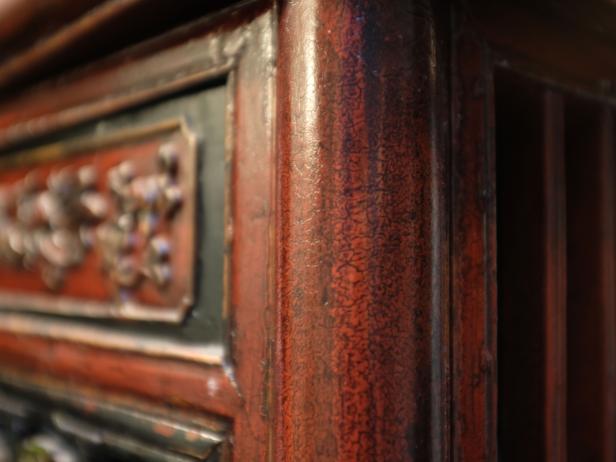
Carrie Hamblin
High levels of lead in the paint on antique furniture and salvaged materials creates an exposure risk during refinishing and DIY projects that generate dust. Visit EPA's lead-safe renovations page for more info on how to work safely with lead paint.
How to Dispose of Homewares Containing Lead
Whatever you do, don’t spread the lead. By sticking that antique sideboard in the next neighborhood yard sale, you could expose someone else who may not understand the risk. If you do decide to say goodbye to some of your treasures, check with your local solid waste authority to determine where you should safely dispose of them, and use common-sense practices to contain dust during handling and transport.
5 Ways to Prevent Lead Poisoning While Fixing Up a Home
DIYers, beware: Lead-based paint exists in most houses built before 1978. Luckily, the EPA has foolproof tips to prevent lead poisoning while repairing or renovating your home.






